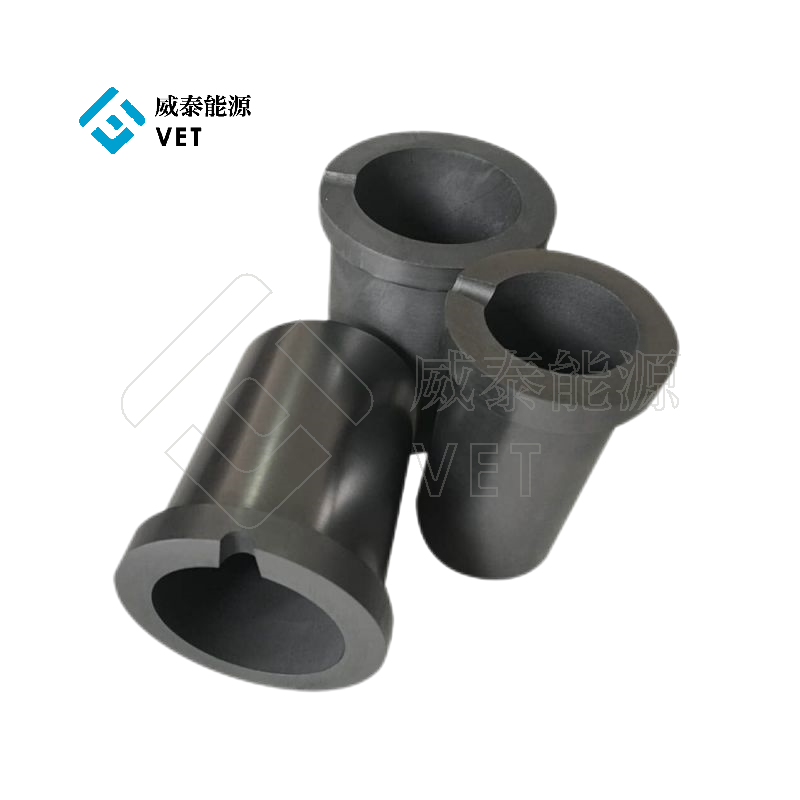Introduction
In the metallurgical industry, the use of high-quality materials is paramount to ensure the efficient and reliable production of metals and alloys. Among the various materials employed, graphite crucibles have gained significant popularity due to their exceptional corrosion resistance properties. This article explores the corrosion resistance properties of graphite crucibles and their indispensable role in the metallurgical processes.
Corrosion Resistance of Graphite Crucibles
Graphite, a form of carbon, exhibits remarkable resistance to chemical attack and high temperatures, making it an ideal material for crucibles in the metallurgical industry. The corrosion resistance of graphite crucibles is attributed to the unique properties of graphite itself. Graphite has a non- reactive nature, which prevents it from reacting with most acids, alkalis, and other corrosive substances encountered during metal melting and alloy production.
▪ Acid Resistance:
Graphite crucibles demonstrate excellent resistance to acidic environments. They can withstand the corrosive effects of acids such as sulfuric acid, hydrochloric acid, and nitric acid. This quality is crucial in processes involving the handling of acids, such as the production of certain metals and metal oxides.
▪ Alkali Resistance:
In addition to acids, graphite crucibles exhibit resistance to alkalis. Alkaline substances, such as sodium hydroxide and potassium hydroxide, are commonly used in various metallurgical applications. Graphite crucibles remain unaffected by these alkalis, ensuring the integrity and longevity of the crucible during such processes.
▪ Oxidation Resistance:
Graphite possesses excellent oxidation resistance, even at high temperatures. When subjected to extreme heat, graphite forms a protective layer of graphite oxide on its surface, which acts as a barrier against further oxidation. This property is particularly advantageous in applications where crucibles are exposed to oxidizing atmospheres, such as the smelting and refining of metals.
Thermal Shock Resistance: Another important aspect of graphite crucibles is their resistance to thermal shock. Graphite has a high thermal conductivity and low coefficient of thermal expansion, enabling it to withstand rapid temperature changes without cracking or breaking. This resistance to thermal shock is crucial in processes that involve repeated heating and cooling cycles, such as metal casting and alloy production.
Advantages of Graphite Crucibles
The corrosion resistance properties of graphite crucibles offer several advantages in the metallurgical industry:
▪ Prolonged Lifespan:
Graphite crucibles have a longer lifespan compared to traditional crucibles made of materials such as clay or ceramic due to their superior resistance to corrosion and thermal shock.
▪ Improved Product Quality:
The non-reactive nature of graphite crucibles ensures that the molten metal or alloy remains uncontaminated, leading to higher-quality end products.
▪ Energy Efficiency:
Graphite crucibles possess good thermal conductivity, enabling efficient heat transfer, uniform temperature distribution, and reduced energy consumption during the melting process.
Cost-Effectiveness: Although initially more expensive than alternative crucible materials, graphite crucibles’ extended lifespan and superior performance make them a cost-effective choice in the long run.
Conclusion
Graphite crucibles play a vital role in the metallurgical industry, offering exceptional corrosion resistance properties, thermal shock resistance, and oxidation resistance. Their ability to withstand the harsh conditions encountered during metal melting and alloy production makes them indispensable in various metallurgical processes. By choosing graphite crucibles, manufacturers can ensure improved product quality, prolonged crucible lifespan, energy efficiency, and overall cost-effectiveness. As the metallurgical industry continues to advance, graphite crucibles will remain a reliable and crucial component in the pursuit of efficient and high-quality metal production .
Post time: Apr-02-2024

